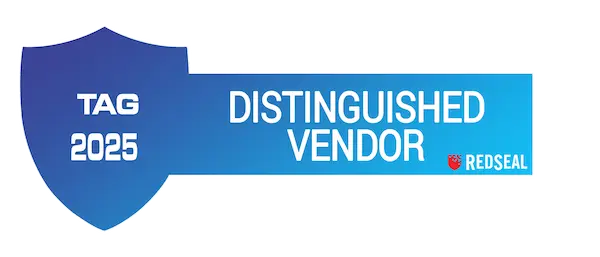OT Networks Under Siege: The Hidden Risks—and How to Address Them with or without RedSeal
Cyber threats targeting Operational Technology (OT) networks are no longer a distant concern—they are an active, persistent, and growing problem. A recent joint advisory issued by the Department of Energy, CISA, and the FBI confirms what many cybersecurity professionals already know: foreign state-sponsored threat actors are now aggressively probing and compromising ICS and SCADA systems in the U.S. energy sector.
These attacks often capitalize on surprisingly basic gaps in security—default credentials, misconfigured access controls, exposed remote access interfaces, or neglected segmentation between IT and OT environments. While they may seem simple, the implications are anything but. A compromised controller or a pivoted attack path could disrupt fuel delivery, tamper with safety systems, or shut down critical infrastructure.
What We See at RedSeal
At RedSeal, we encounter this reality every day. Our platform is deployed across a wide range of industries—including energy, manufacturing, and utilities—where we routinely identify OT exposures that customers were previously unaware of. In some cases, these exposures were created intentionally to allow vendor support or remote troubleshooting. In others, they were simply misconfigurations, legacy access rules, or firewall exceptions that no one remembered to remove.
Regardless of how these exposures occur, the result is the same: a critical path from the outside world into some of the most sensitive and fragile components of an organization’s infrastructure.
The RedSeal Approach
RedSeal helps customers take control of their OT cybersecurity posture by providing complete visibility and continuous validation of their network environment. Through RedSeal’s Continuous Threat Exposure Management (CTEM) approach, organizations can:
- Scope – Identify and classify OT assets that matter most from a business risk perspective.
- Discover – Continuously map the network, including hidden connections and unintended access between IT and OT systems.
- Prioritize – Understand which exposures present the highest risk based on reachability, business value, and known vulnerabilities.
- Validate – Simulate potential attack paths and validate segmentation policies to ensure defensive strategies are working as intended.
- Mobilize – Provide clear, actionable remediation guidance to IT and OT teams to close the gaps.
With this process, RedSeal empowers organizations to proactively manage risk and reduce the likelihood of an incident long before an attacker gets a foothold.
What If You Don’t Have RedSeal?
If your organization doesn’t have RedSeal, that doesn’t mean you’re helpless—but it does mean your path will be more manual and potentially less complete. Here’s what you should prioritize:
- Conduct a Manual Network Audit
Review all network routes and firewall rules, particularly those that bridge IT and OT zones. Look for legacy rules, VPN tunnels, or direct internet access to OT segments. - Identify and Remove Default Credentials
Many OT devices ship with default usernames and passwords. Inventory all ICS/SCADA systems and ensure these have been changed—and are regularly audited. - Enforce Network Segmentation
Even without automated tools, you can design and enforce segmentation rules to isolate OT from IT and internet-facing systems. Use internal firewalls and access control lists. - Implement Strict Remote Access Policies
Disable unnecessary remote access. For required connections, use jump servers, multi-factor authentication, session recording, and strict time-bound access. - Test for Reachability
Use simple tools like traceroute, port scanning, and network simulation software to assess how systems can be reached from different zones. Keep a living map of known and expected paths. - Work with OT and IT Teams Together
Misalignments between IT and OT teams often create blind spots. Establish joint governance and regular reviews of access policies and network design.
Final Thoughts
The convergence of IT and OT has brought enormous efficiencies—but it has also introduced risk at a scale and complexity few organizations are prepared to manage manually. Whether it’s a state-sponsored APT or a misconfigured firewall, attackers only need one exposure to cause catastrophic disruption.
Whether you’re using RedSeal or not, the key is to treat your OT environment with the same—or greater—rigor as your IT environment. Visibility, validation, and vigilance must become routine practices, not reactionary responses.
Want to See RedSeal in Action?
If you’re looking for a way to automate this process, simulate attack paths, and continuously monitor segmentation and policy compliance across hybrid environments, we’d be happy to show you how RedSeal works. Our platform has helped government agencies and Fortune 500 companies protect their most sensitive systems—and we can help you too.



